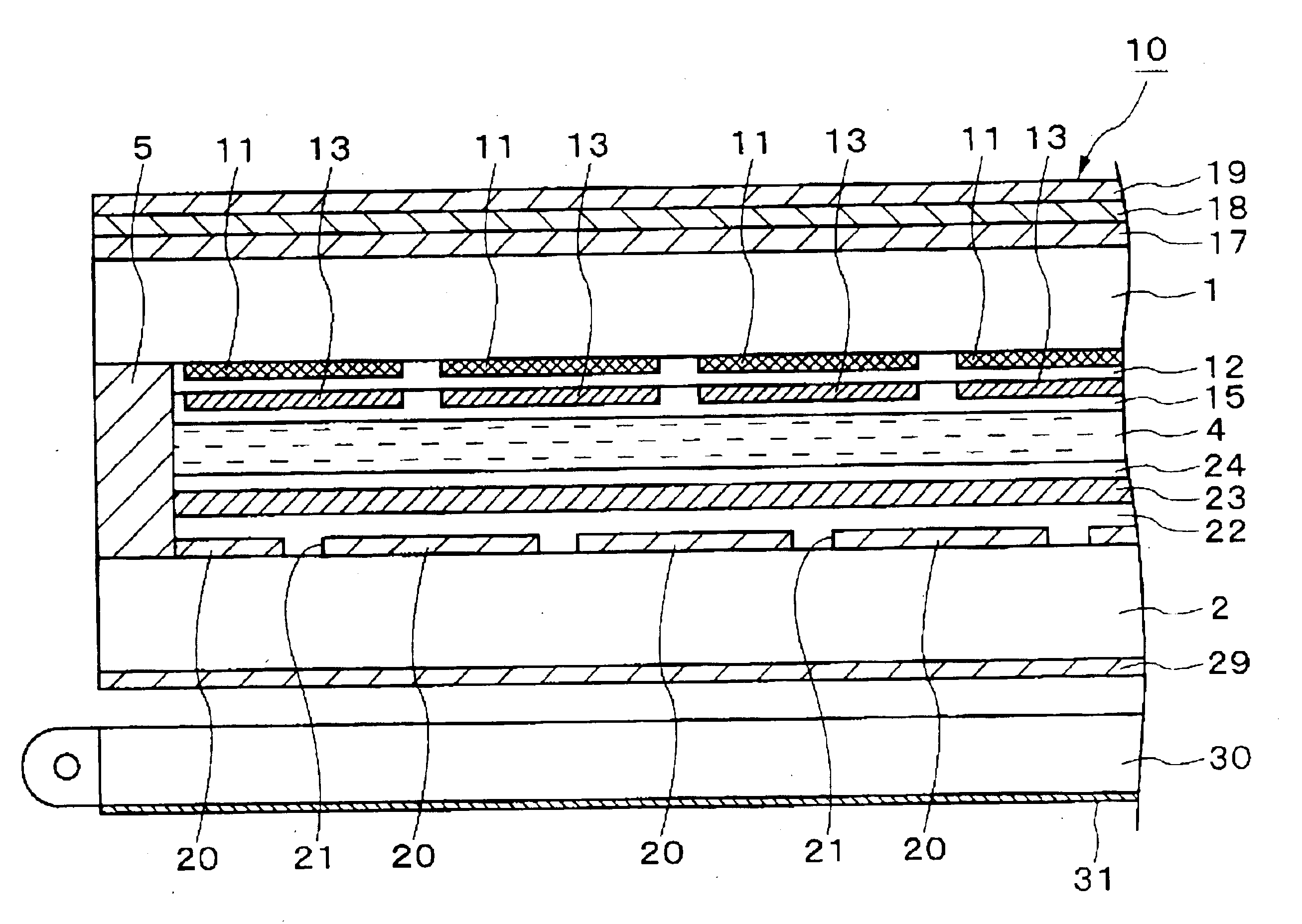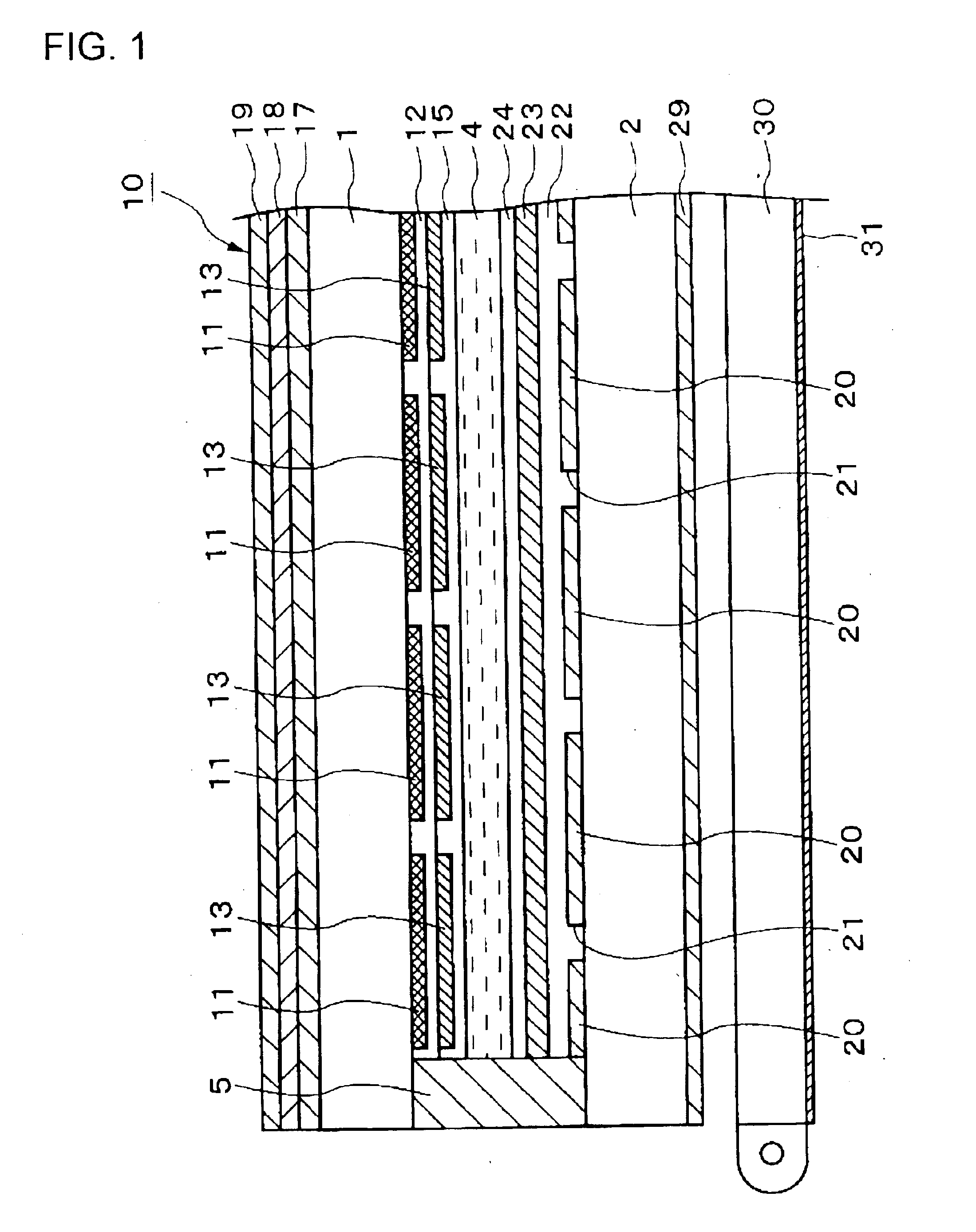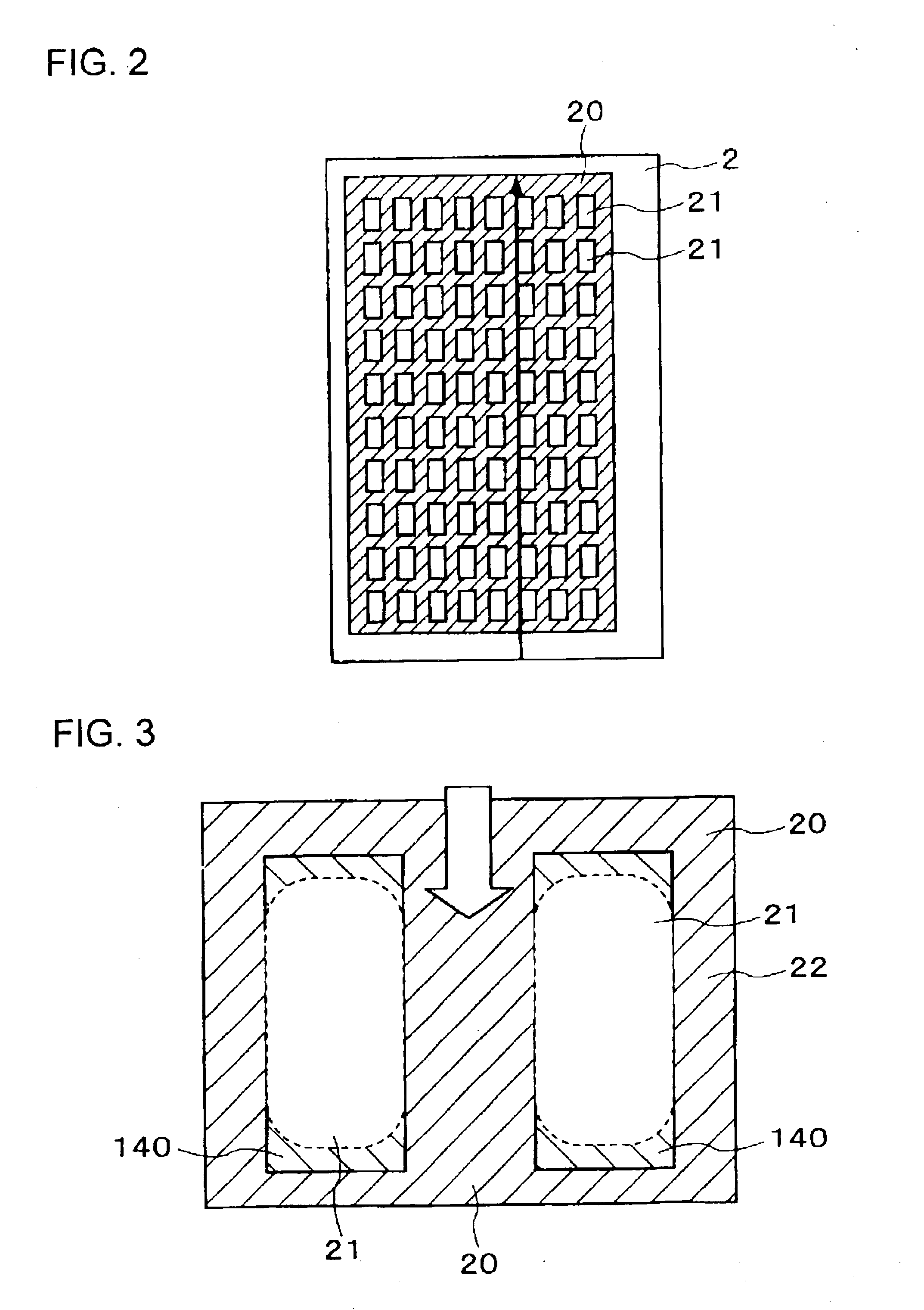[0015]Accordingly, in the liquid
crystal display device shown in FIG. 8 having the polarizing layer 121 disposed at the inner sides of the substrates 101 and 102, the light incident upon the
polarizer 119 from the liquid
crystal layer 104 is
linearly polarized light when a bright display is provided in the transmission mode. Therefore, there is almost no light absorbed by the
polarizer 119. Consequently, the liquid
crystal display device makes it possible to address or overcome the problem of the luminance being insufficient in the transmission mode, which is a problem in related art transflective liquid
crystal display devices, and can provide a bright display.
[0020]The inner polarizing layer produced by the method of the present invention is such that the direction in which stress is exerted during the application thereof is substantially the same as the direction of extension of the opening defined by a step formed by the opening and the
reflective layer, so that the fraction of a portion at the step that extends in a direction intersecting the direction in which the stress is exerted is reduced, so that nonalignment in the material of the inner polarizing layer can be reduced or minimized. This makes it less likely for a reduction in the property of the inner polarizing layer caused by the non-alignment to occur, so that a
light source can be used with higher efficiency. Therefore, a liquid
crystal display device that provides a bright transmissive display can be provided.
[0022]According to this method of the present invention, in forming an inner polarizing layer, an alignment layer for the inner polarizing layer aligned in the same direction as the direction of extension of the opening of the
reflective layer is first formed. Then, the inner polarizing layer is formed on the alignment layer for the polarizing layer. Therefore, by interposing the alignment layer for the inner polarizing layer between the reflective layer and the inner polarizing layer, the degree of non-alignment in a portion of the inner polarizing layer at the opening of the reflective layer can be reduced. In addition, since the alignment layer for the polarizing layer is aligned in the same direction as the direction of extension of the opening of the reflective layer, alignment properties at the boundary between a step and a level portion of the reflective layer do not change, so that the alignment layer for the inner polarizing layer has acceptable alignment properties. Further, since the inner polarizing layer is formed on the alignment layer having acceptable alignment properties, the degree of non-alignment in the inner polarizing layer can be further reduced. As a result, it is possible to reduce attenuation of light in the inner polarizing layer, so that a
light source can be used with greater efficiency. Therefore, it is possible to provide a liquid crystal display device that provides a bright transmissive display.
[0024]According to the method of producing a liquid crystal display device of the present invention, by making the direction of extension of the stripe-shaped
electrode and the direction of exerting stress upon the inner polarizing layer the same, the percentage of a portion at a step, which corresponds to an edge of the
electrode, extending in a direction intersecting the direction of exerting stress is reduced, so that the degree of non-alignment in the material of the inner polarizing layer due to the step at the
electrode can be reduced. As a result, attenuation of light in the inner polarizing layer can be reduced, thereby making it possible to provide a liquid crystal display device which can provide a display with
high luminance. In this structure, the reflective layer in the present invention is not a necessary
structural element, so that the present invention is effective not only in a transflective liquid crystal display device, but also in a transmissive liquid crystal display device.
[0026]According to the method of producing a liquid crystal display device of the present invention, prior to forming an inner polarizing layer, an alignment layer for the inner polarizing layer aligned in the same direction as the direction of extension of the stripe-shaped electrode is formed, so that it is possible to prevent the alignment properties of the inner polarizing layer from becoming degraded due to the step at the electrode. Therefore, an inner polarizing layer having good alignment properties can be formed. As a result, it is possible to provide a liquid crystal display device which can provide a high-quality display.
[0031]The liquid crystal display device of the present invention is produced by any one of the aforementioned methods of producing a liquid crystal display device. According to this structure, since the alignment properties of the material of the inner polarizing layer are not degraded by a step at an underlying layer, the liquid crystal display device includes an inner polarizing layer having good polarization properties. When the liquid crystal display device includes such an inner polarizing layer having good polarization properties, it provides a bright transmissive display and has excellent
visibility.
 Login to View More
Login to View More 


